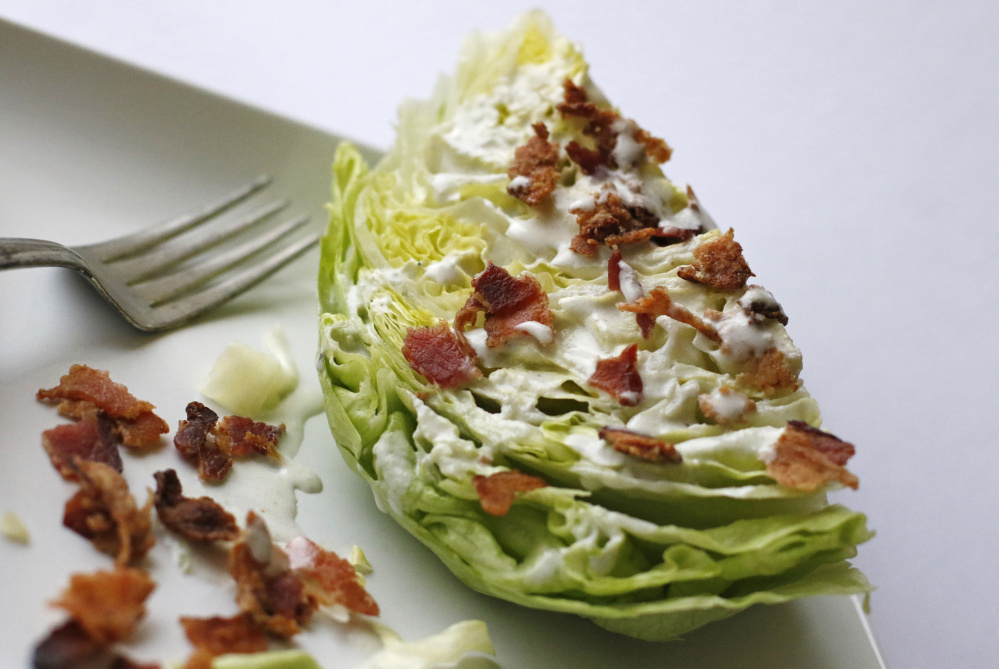If I’m standing at my sink, the dish towels and the flour sack cloths I use to wrap greens for storage lie in a drawer at my left hip, the cotton dish cloths I knit myself hang over the edge of the wash basin, and the torn-up old T-shirt cleaning rags are stacked in a cabinet at my knees.
So why is it still instinctual for me to reach across my body to pull a paper towel from its rolling dispenser every time there’s grease splattered on the stove, milk spilled on the counter, or who knows what the dog dragged in on the floor.
Bad habits die hard, that’s why. But it is the season for resolutions, so in 2016 I am resolved to kick my paper towel habit.
Part procrastination, part preparation, part data collection, I tracked for a week where all my paper towels were going. The biggest culprit was drying my hands, which I do a lot (on my worst day almost 20 paper towels worth). My next most often use (4-8/day) was wiping down counters either after meals or during spills. Then came dealing with raw meat juices (2-3 towels/day). And finally, draining bacon (1 towel/day).
I used an entire roll to wash my dining room windows, but that got amortized over a year. I won’t divulge the amount of paper used in the bathroom as that is definitely not up for debate.
The first step to breaking a habit is conjuring guilty feelings about that particular behavior to spur on sustained action. According to CarbonRally.com, an online community that issues challenges for reducing your carbon footprint via small lifestyle changes, suspending paper towel use in the average American household can reduce carbon emission by 5.8 pounds. And save you $8 to $10 a month, bonus!
The next step to a successful resolution involves a pledge, typically rooted in little things you already know you can pull off to give you some momentum to tackle the bigger roadblocks on the way. To that end, I pledge:
• To sling a dishtowel over my shoulder whenever cooking upon which I will wipe my hands.
• To drape two (color coordinated, of course), microfiber cloths over the paper towel roll. If I reach for a paper towel to handle a splatter or a spill, I’ll grab a reusable cloth, which can be washed and dried in rotation on the oven door handle.
• To unwrap animal proteins in the sink, where drippings can be rinsed away, and plan ahead to air dry the meat safely in the fridge, if it must, to suit the cooking process rather than dabbing the meat off with paper towels.
• To clean my windows with yesterday’s newspaper, a trick my father-in-law learned from his mother for streak-free panes. I wrote a note to remind myself of this pledge come spring.
I was initially stumped about the bacon. I did not want to permanently soil a cloth with grease stains, and don’t want newsprint on my breakfast meat.
I could bake it, elevated on a sheet pan by a rack, but running the oven for 30 minutes each morning as I make my kids their 2-piece daily ration feels like an energy waste.
But seeing as 20 slices can cook in that same period, make-ahead bacon is my answer.
Now my problem is figuring out something to do with all that bacon grease. But is that really a problem?
BUTTERMILK, BACON GREASE AND BLUE CHEESE DRESSING
I’ve taken to curing my own bacon from local pork belly whenever I can get my hands on it. It’s not as hard as it sounds, and not only is the bacon more satisfying (which means you eat less), its grease also runs almost crystal clear and is a creamy white when it hits its solid state. I generally pop popcorn in it and tried the recipe for Bacon Fat Gingersnaps published this month in The New York Times to many accolades. But as I was looking to expand my grease repertoire (yes, I really just wrote that), I found this recipe in Deborah Krasner’s “Good Meat: The Complete Guide to Sourcing and Cooking Sustainable Meat.” The title says it all. Use the dressing on a wedge of lettuce, a sandwich, crackers or a spoon.
Makes 2 cups
3/4 cup buttermilk
2/3 cup mayonnaise
2/3 cup crumbled blue cheese
3-4 tablespoons pastured pork bacon fat
1 tablespoon red wine vinegar
1 garlic clove, crushed
Pinch of cayenne
Salt and pepper
Place all ingredients except salt and pepper in the bowl of a food processor. Hit on and continue until the mixture is well blended and has only small chunks in it. Season with salt and pepper to taste. Store in a glass container in the refrigerator for up to 1 week.
Christine Burns Rudalevige is a food writer, recipe developer and tester, and cooking teacher in Brunswick. She writes about feeding her family Maine seafood at familyfish.net. Contact her at cburns1227@gmail.com.
Send questions/comments to the editors.


